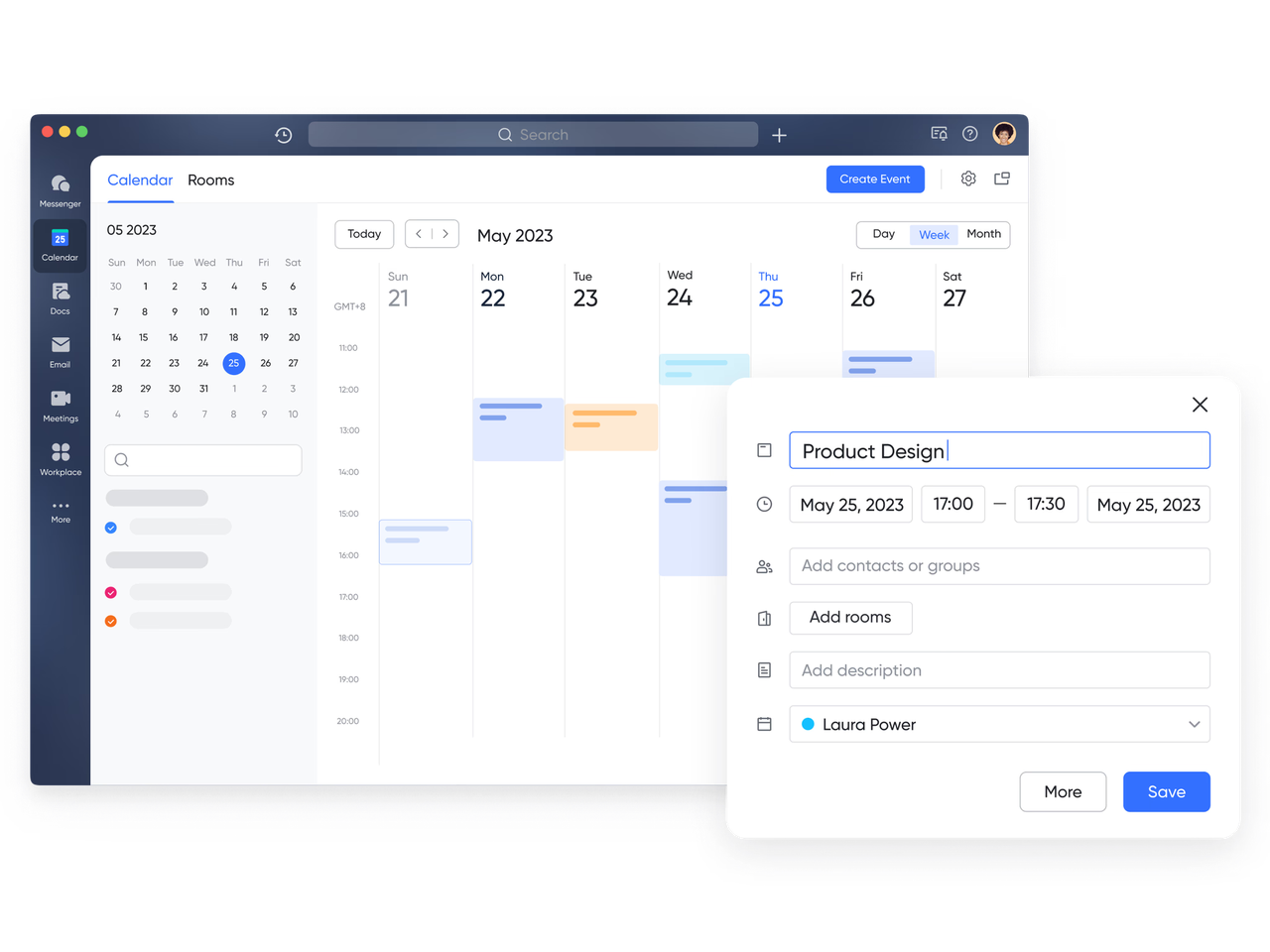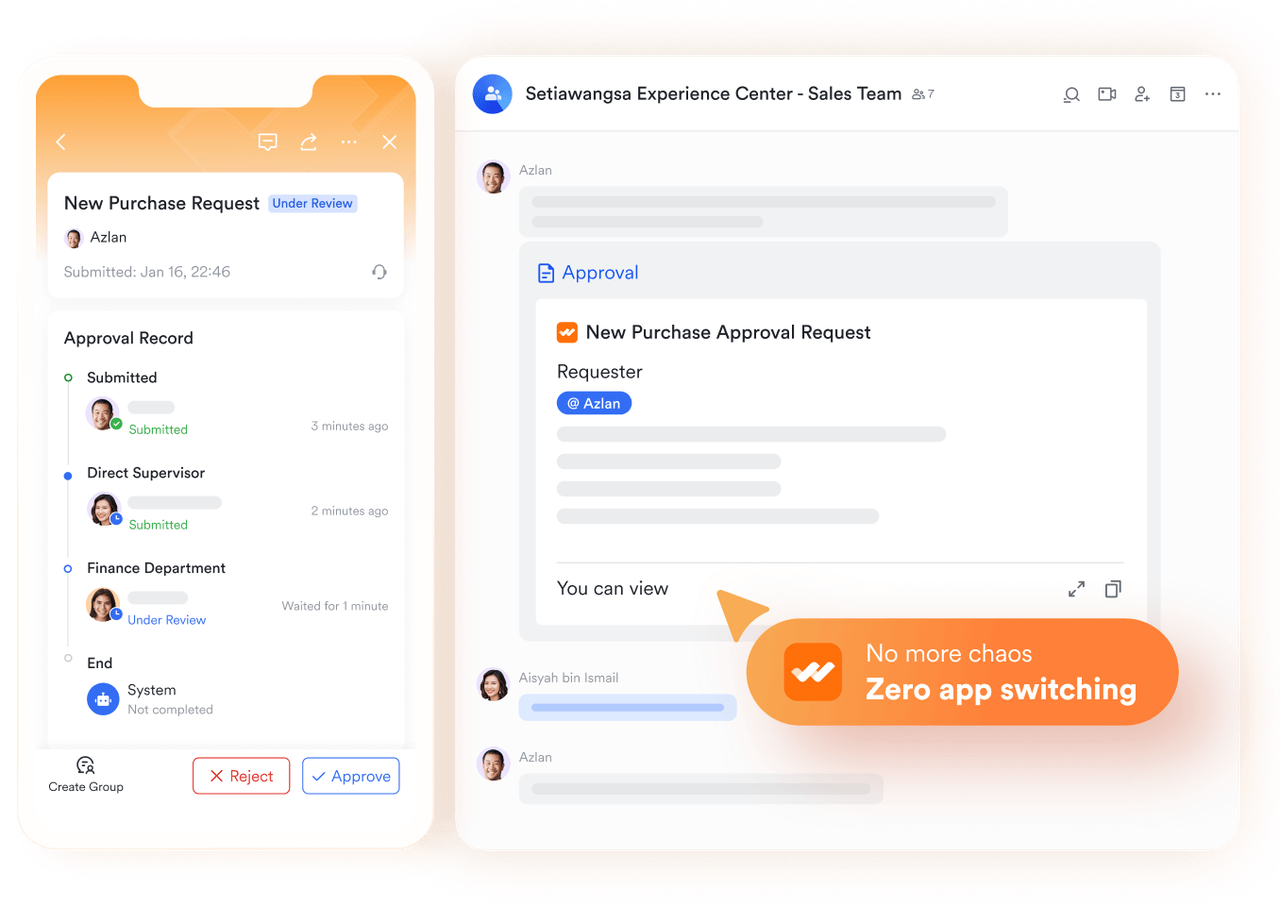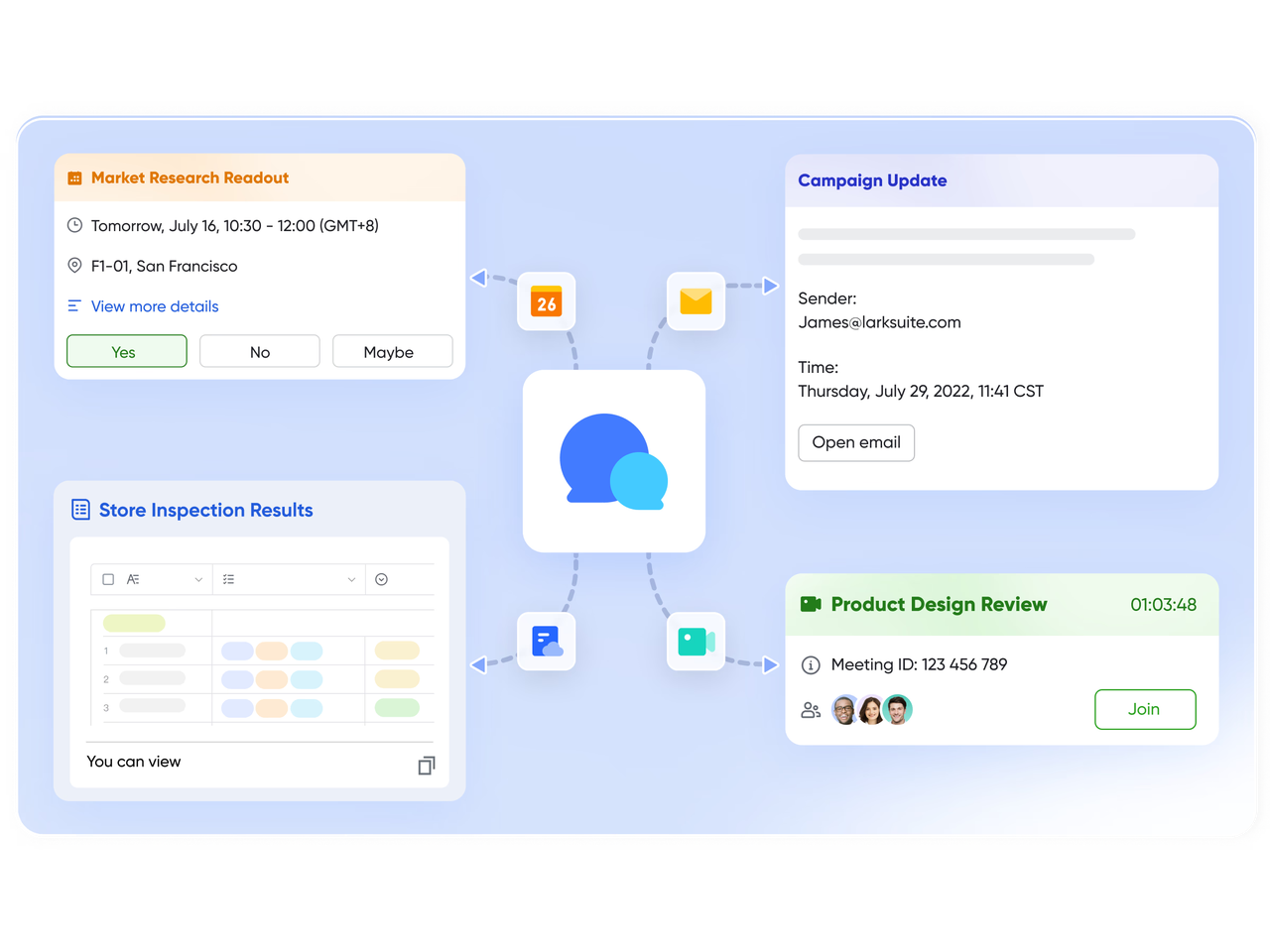Most teams see their digital tools as a set of separate functions. A chat app for quick updates. A calendar to schedule meetings. A document tool to draft and share files. But working this way means every task lives in isolation, and people waste time stitching things together. The truth is, productivity doesn’t come from using more apps — it comes from how those apps connect.
This is where leaders often miss the mark. They adopt Lark for messaging or meetings, but they don’t explore the deeper functionality that transforms it into a full project command center. That’s also why Lark is increasingly recognized among the best project management tools. It isn’t built to be “just another app.” It’s designed to create a seamless, connected environment where teams can execute work without friction.
Let’s take a closer look at how Lark hidden efficiency layer shows up across its features.
Lark Base: Turning Raw Data Into Repeatable Processes

Every team has been there: juggling endless spreadsheets, trying to keep track of project details. While spreadsheets work in the beginning, they buckle under pressure when multiple departments need visibility. Columns get messy, version control falls apart, and leaders start chasing updates across files.
Lark Base flips this problem on its head. It provides a flexible workspace where teams can manage tasks, track progress, and build systems that scale. Instead of staring at static rows, you can switch between views — tables, Kanban boards, or timelines — depending on the project’s needs. That flexibility allows marketing, sales, or product teams to all work from the same source of truth, without sacrificing their preferred way of visualizing data.
The real power of Base, however, comes from automation. Assignments, reminders, and status changes happen automatically. A new lead entered through a form? It shows up instantly in Base. A project moves to “completed”? Notifications are sent without manual effort. Over time, Base becomes less of a tracker and more of an operational backbone. It’s the engine that quietly keeps teams aligned without leaders hovering over the details.
Lark Calendar: Scheduling That Reduces Noise

Calendars are supposed to make life easier, yet too often they add clutter. Team members spend hours trying to coordinate times, share agendas, and make sure everyone is prepared. Even when the meeting happens, critical notes end up scattered across apps.
Lark Calendar removes these pain points by embedding context directly into scheduling. The event agendas and files are attached to the invited’s calendar, so no one shows up unprepared or unnotified. Availability is visible in real time, cutting down endless back-and-forth. And because Calendar sits inside the same platform as Messenger and Docs, conversations about the meeting stay connected to the event itself.
The effect is subtle but powerful: meetings stop feeling like separate interruptions and instead become an essential part of the workflow. Leaders no longer have to check in constantly because preparation happens naturally within the system.
Lark Approval: Cutting Delays From Decision-Making

One of the most common bottlenecks in organizations is waiting for approvals. Whether it’s expense claims, leave requests, or project sign-offs, too much time is lost chasing updates and nudging stakeholders. The result? Leaders spend their energy firefighting instead of guiding strategy.
Lark Approval provides a way out of this cycle. By standardizing requests into clear forms and sending instant notifications to managers, it removes the guesswork. Decisions happen faster, and everyone can see where a request stands without endless follow-ups. Transparency isn’t just a bonus — it’s the key to moving work forward.
This isn’t just a tool for convenience; it’s an automated workflow that helps projects avoid unnecessary pauses. The system itself ensures progress continues, which frees leaders from becoming the bottleneck. Instead of managing exceptions, they can focus on outcomes.
Lark Docs + Wiki: Knowledge That Stays Put

Ask any team what slows them down, and you’ll hear the same answer: lost information. Files saved in random folders. Policies hidden in email attachments. Old versions that no one knows are outdated. Each of these issues adds friction that slowly eats away at productivity.
Lark tackles this through a combination of Docs and Wiki. Docs allow real-time collaboration — brainstorming sessions, draft documents, or meeting notes all live there. Wiki, on the other hand, becomes the long-term library. It’s where finalized materials, templates, and reference guides are stored. Together, they create a knowledge system that’s always current and easy to search.
The beauty is in how this system links with the rest of Lark. A Base record can point directly to its supporting Wiki entry. Or a Doc link can be copied and pasted into your Calendar event description for meeting discussion. Instead of information scattering across tools, everything is tied together. Leaders don’t need to re-explain the same details over and over, because the knowledge base becomes the single source of truth.
Lark Messenger: Where Conversations Turn Into Action

Every team chats. But in many organizations, chats become cluttered with jokes, reminders, and questions that don’t translate into action. A leader might send instructions, but unless someone copies them into a tracker, they disappear into the feed.
Lark Messenger avoids this pitfall by making conversations actionable. Messages can be pinned, searched, or converted into tasks with one click. Instead of treating chat as a temporary space, it becomes the spark that leads to execution.
This reduces the need for micromanagement. Leaders no longer have to follow up on every discussion because the platform itself transforms conversations into structured work. Teams stay focused, and leaders can stay hands-off.
Lark Meetings: Every Session Produces Results

Meetings are notorious for draining time without delivering outcomes. Too often, teams leave without clear next steps or a reliable record of what was discussed. Leaders end up repeating themselves, and accountability slips.
Lark Meetings changes this dynamic. Automatic transcription captures the full conversation, while highlights surface the key points. Recordings and notes are synced back to Messenger and Docs, so the session isn’t an isolated moment — it’s a part of the ongoing workflow.
When meetings consistently produce usable records, leaders don’t have to micromanage follow-ups. Teams already know what to do, and progress continues without extra oversight.
Conclusion: The Efficiency Layer Leaders Can’t Afford To Miss
The efficiency gains inside Lark don’t come from any single feature. They emerge from the way everything connects. Base structures project work. Calendar aligns schedules. Approval clears bottlenecks. Docs and Wiki safeguard knowledge. Messenger keeps conversations moving, while Meetings ensure accountability.
That interconnected design is why leaders increasingly see Lark as more than a communication tool. It functions as full business process management software — a system that eliminates duplication, reduces delays, and builds momentum without leaders micromanaging every detail.
If your team feels busy but struggles to stay productive, it’s worth looking beneath the surface. The efficiency you’ve been searching for may already be built into Lark, waiting for you to unlock it.


